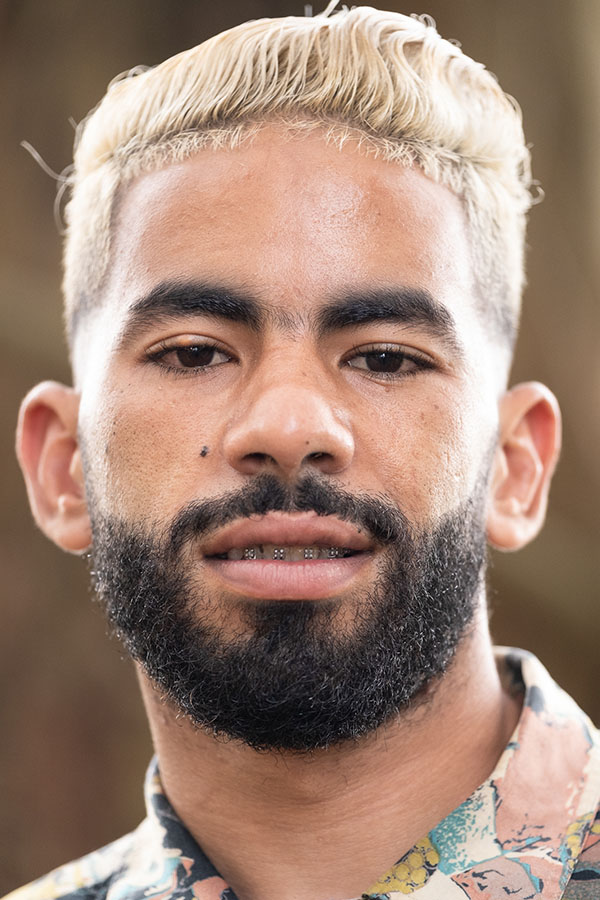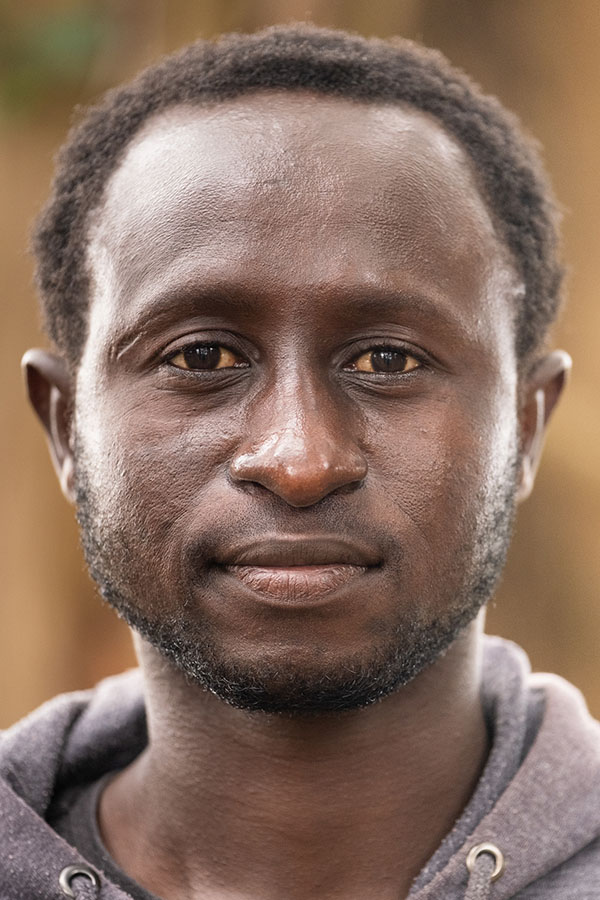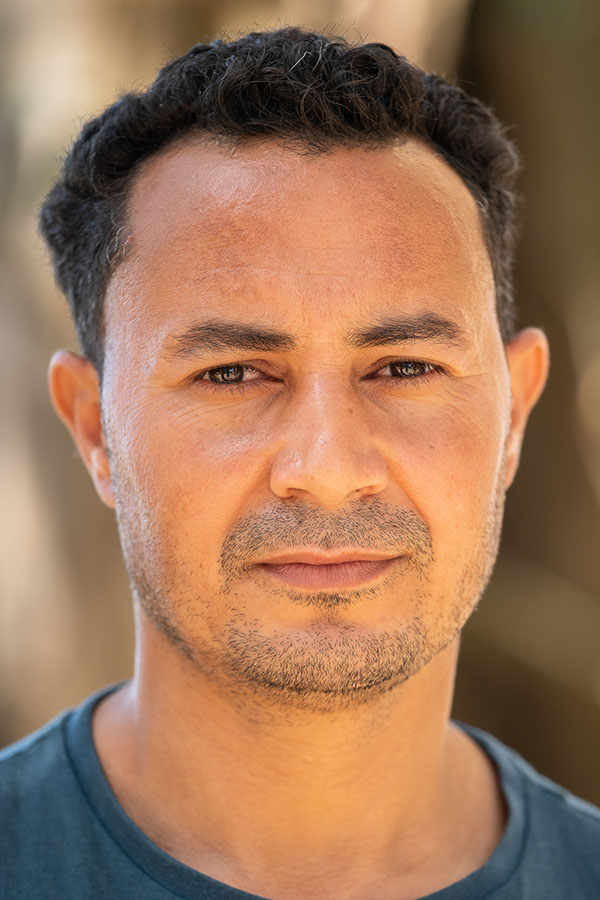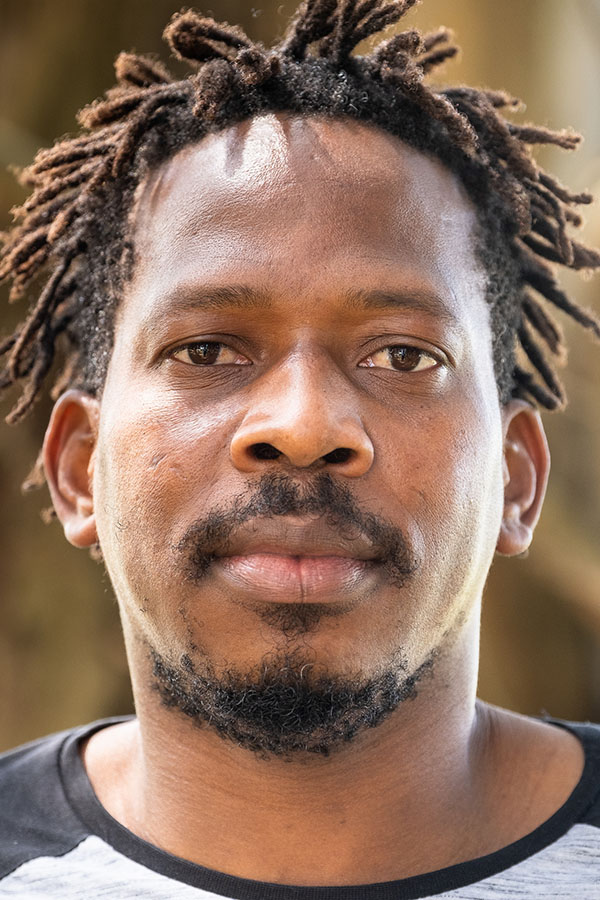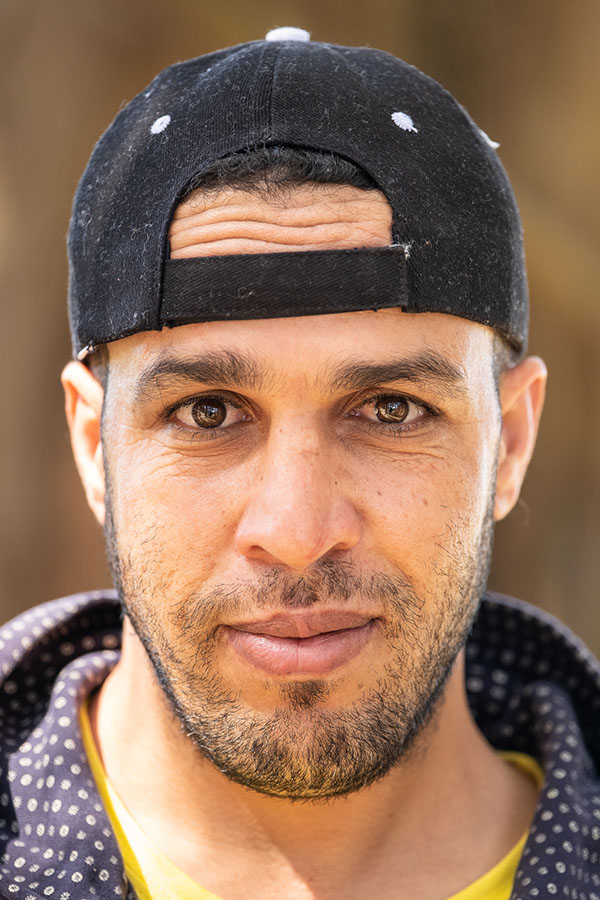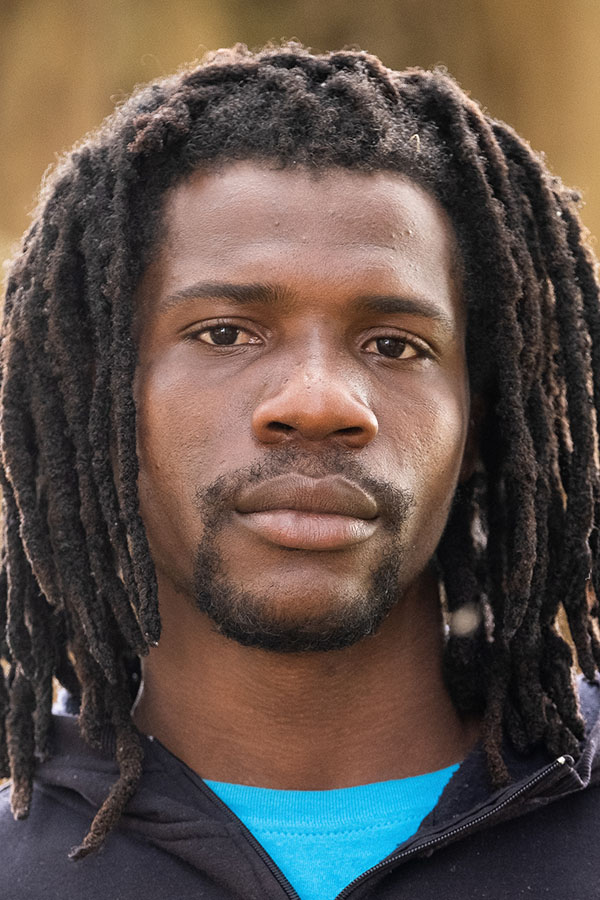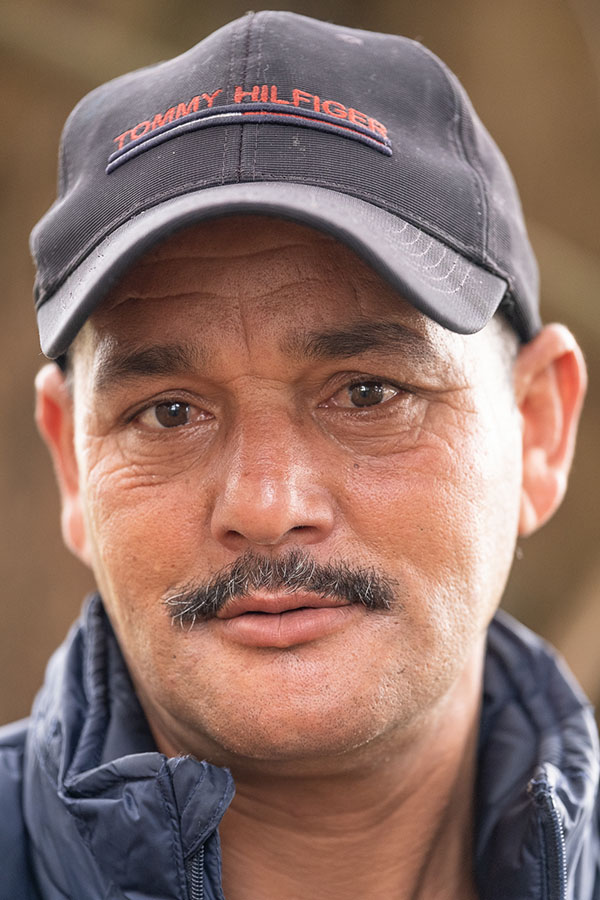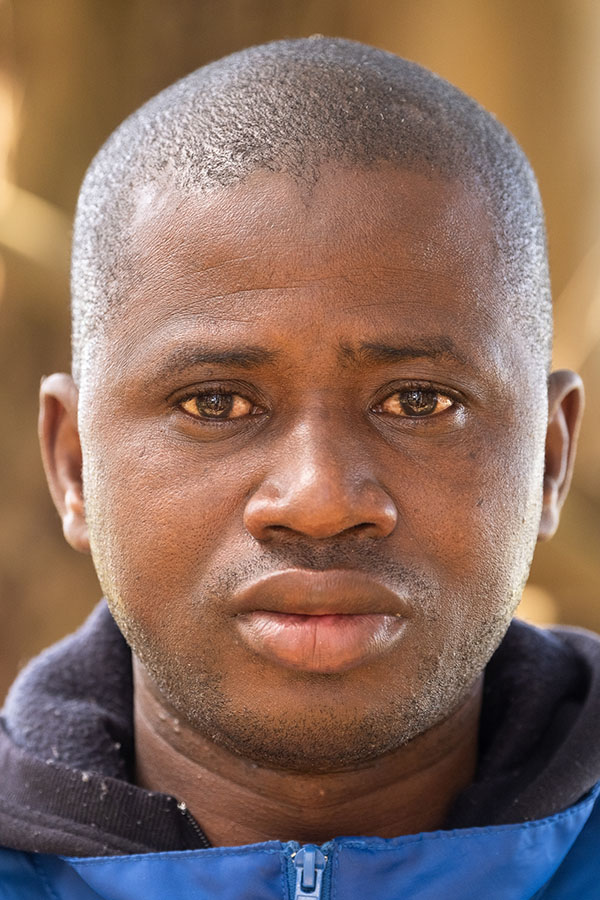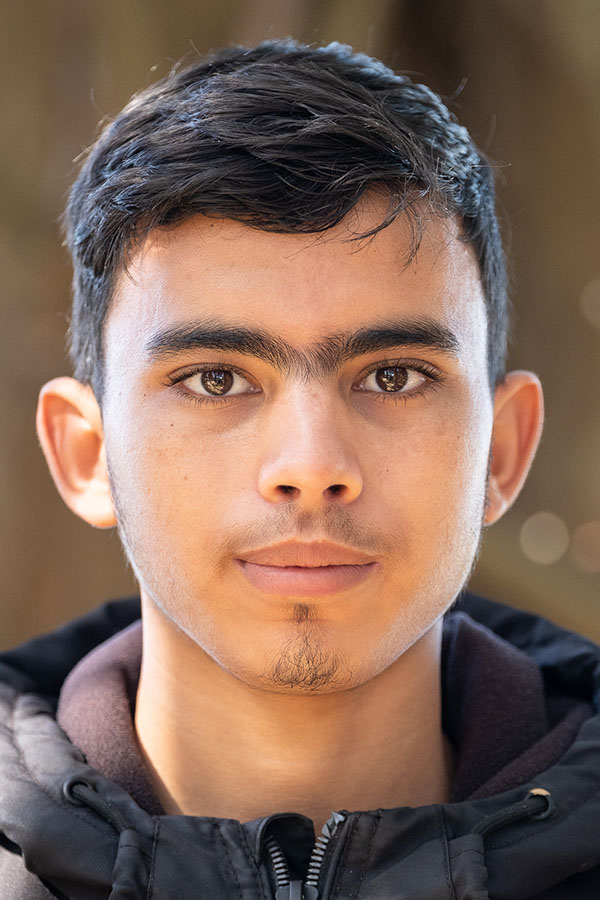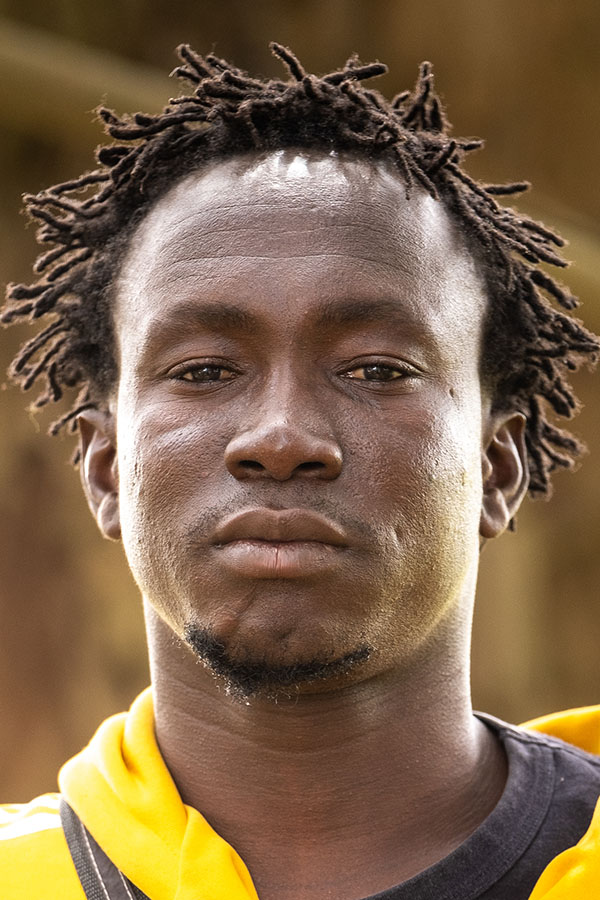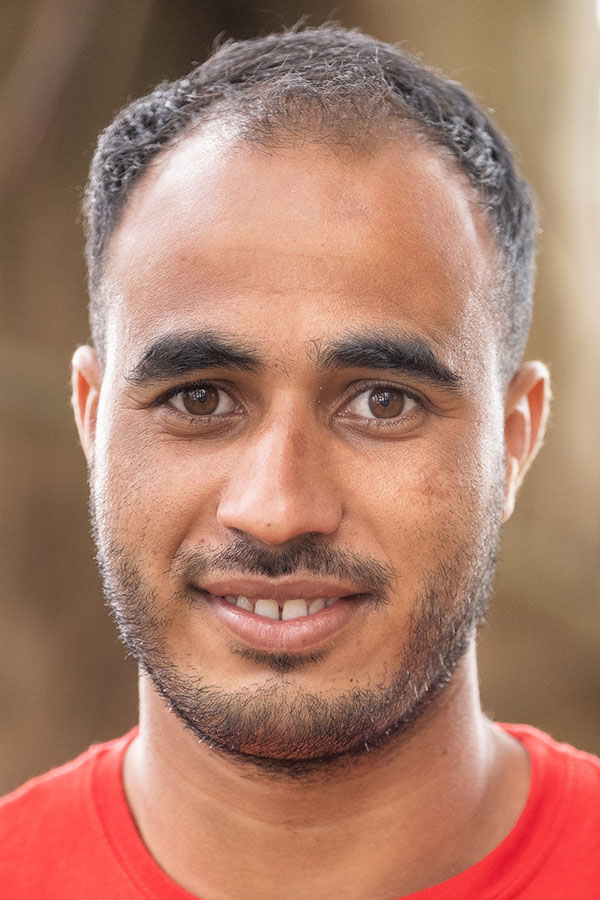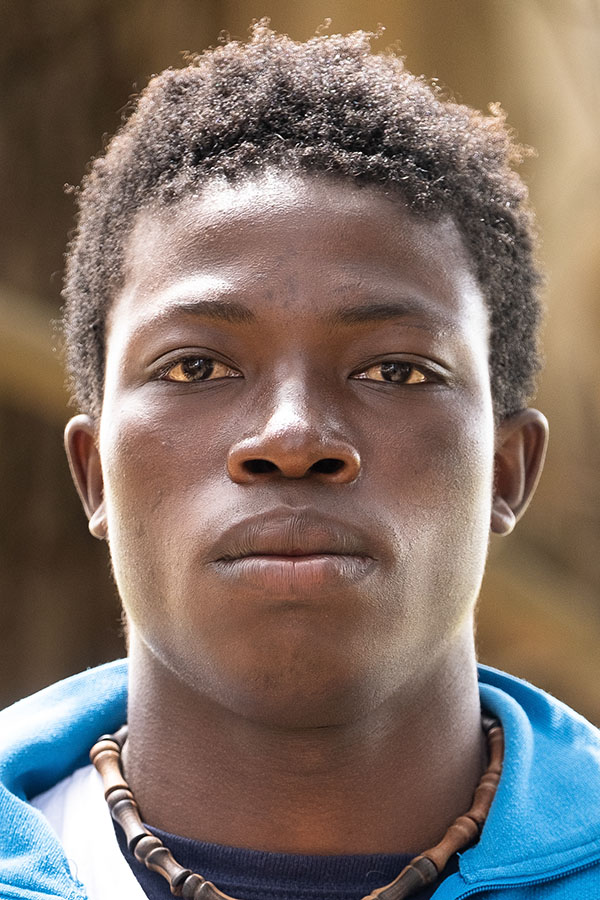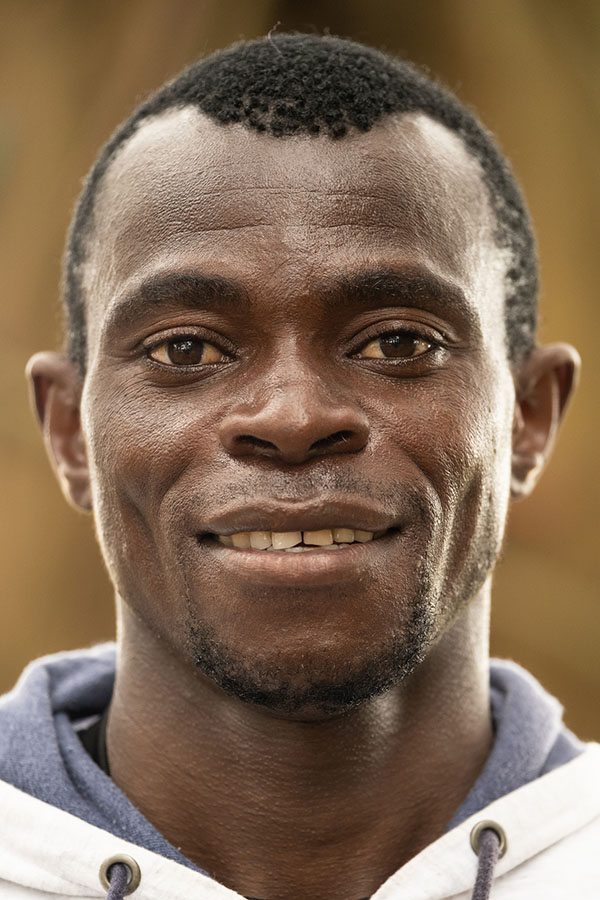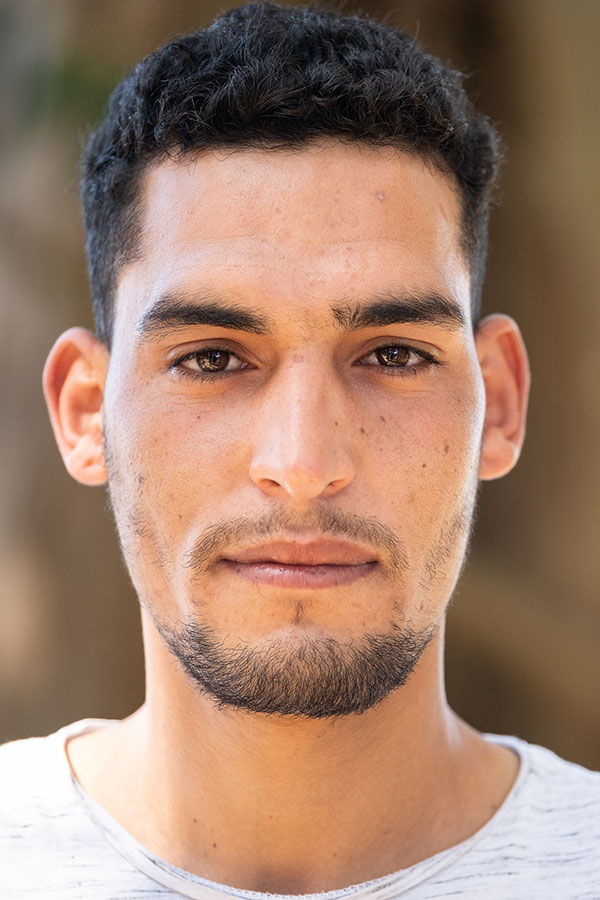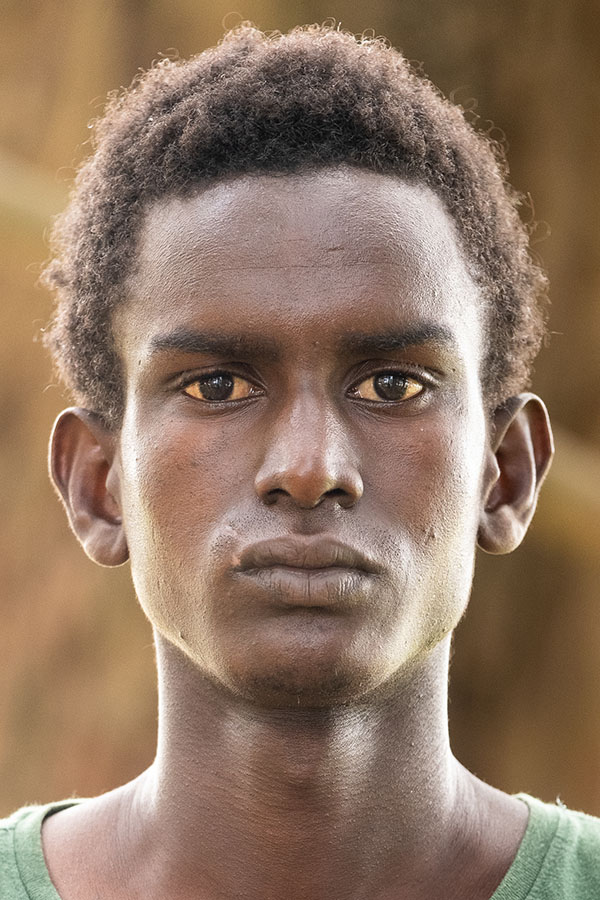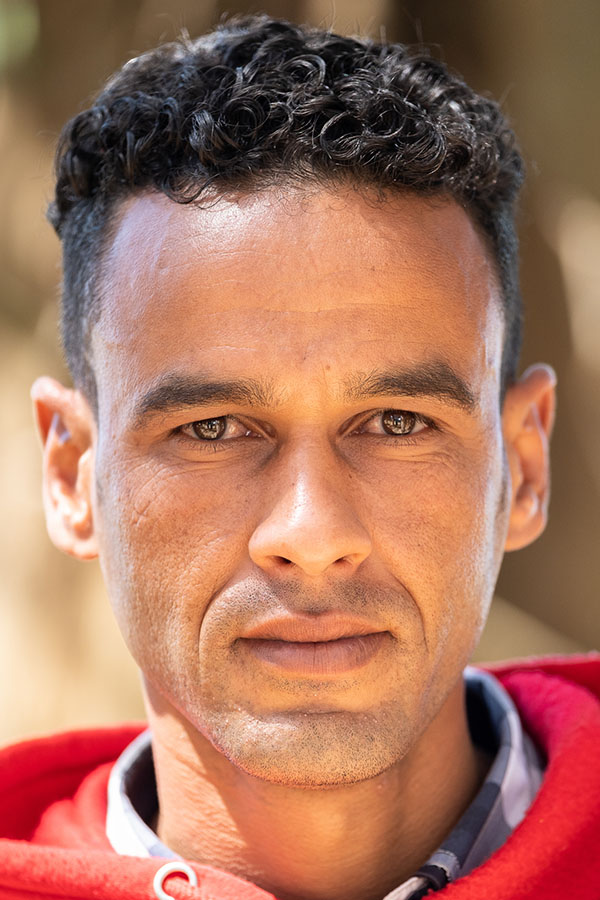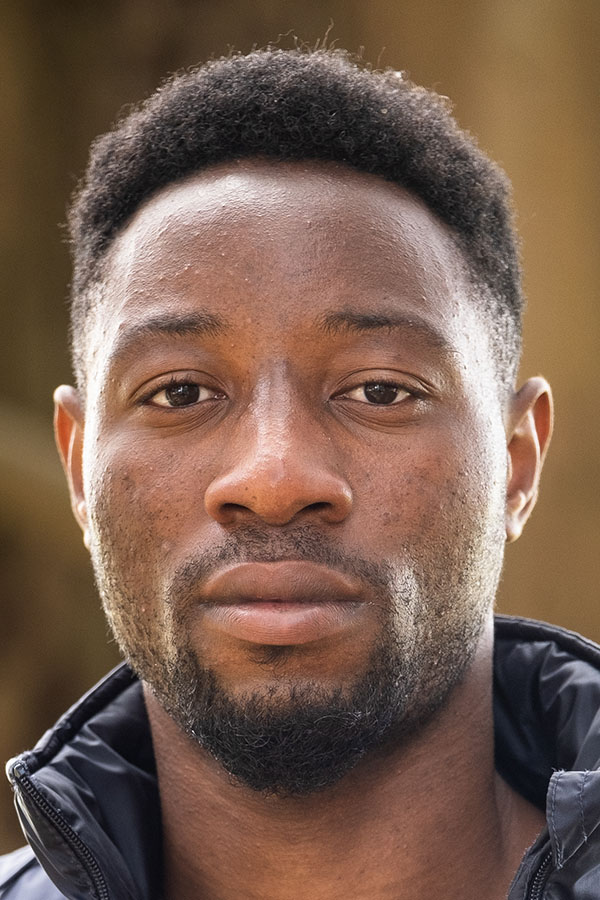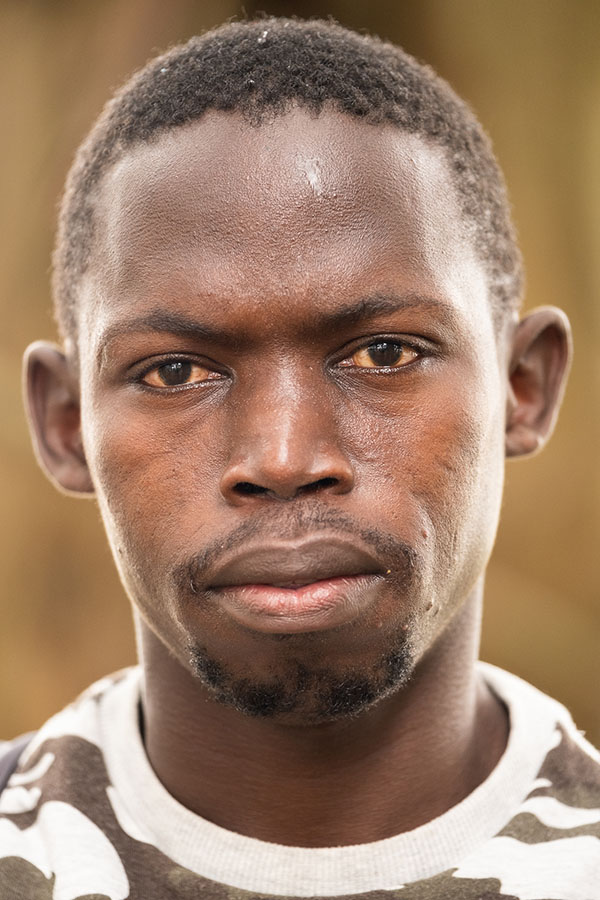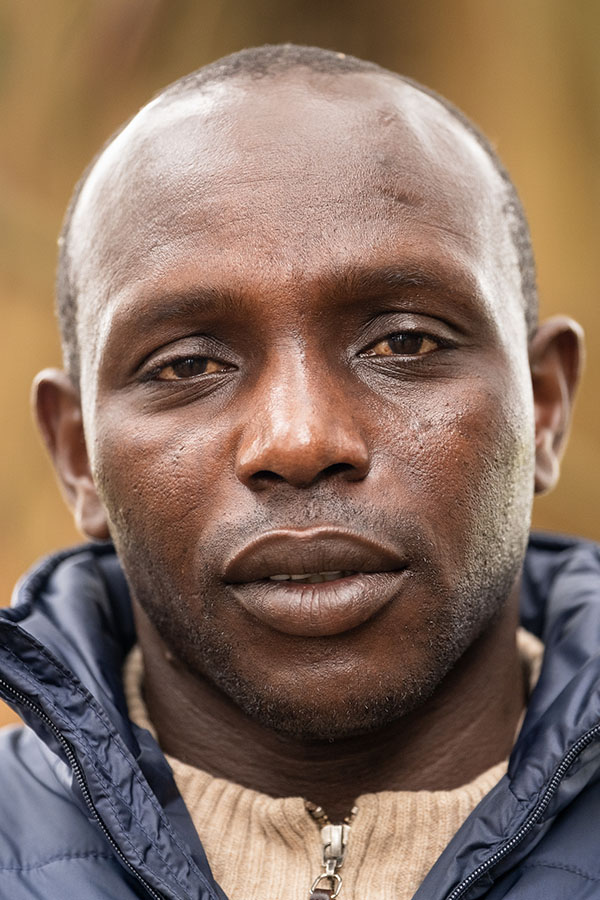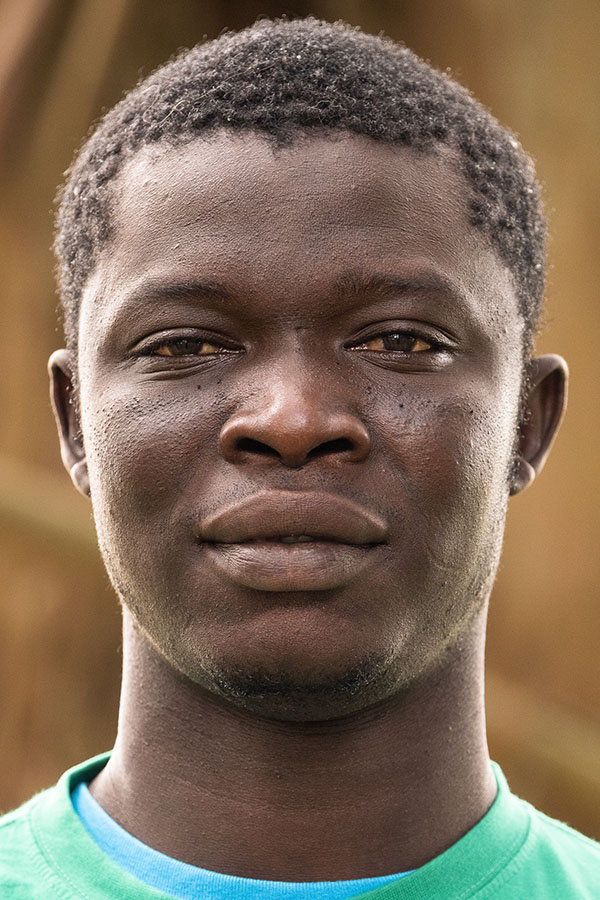![]()
Giving a face and a story entails an identification. And we are able to recognize each other through identification. After placing ourselves in front of these stories and knowing the life tales of their protagonists we can open a room for empathy. A mirror in which we can get rid of our fears after looking at it. A mirror that leads us to the necessary act of reflection as an act of justice that rebels against the stigmatized discourses on migration that incite racism and xenophobia.
Edmirson, Badr, Aziz, Abdelkarim Hamir, Abdelkarim Najah, Ahmed, Altou, Ibrahima, Ismael, Mamadou, Mohamed, Omar Baldé, Omar Ndiaye, Ousmane, Rachid, Rhail, Samounou, Sidi, Tidiane and Youssef reached the Canary Islands after surviving the world’s deadliest migratory route. The process of criminalizing certain types of migratory movements does not end with the obstacles they have to face in the sea, as once they arrive in these places, they are retained in a macro-campsite called “Las Raíces” (The Roots) where their lives become interrupted.
At the same time, the implicit paradox in the place-name “Las Raíces” (literally translated as ‘the roots’) widens its scope as it is transformed into a place where there is a convergence of the different roots of the people who are in it. Facing the poor living conditions of the official campsite, that of shame, an alternative campsite emerges, the campsite of dignity. In that place, networks of solidarity and care between the migrants and the different visitors who come to support them are constantly created. In that way, new bonds based on mutual understanding and identification among peers are daily born and take root in Las Raíces.
Roots hold plants to the soil. Life is created out of the synergies among the different elements that intervene in the growth of roots and plants. Roots are fundamental, yet they are invisible as well. Only the bark of the tree is allowed to remain in the light.
Sagna is 27 years old and he is both Gambian and Senegalese as he has the double nationality although he has lived for most of his life…[Read more]
Is a painter and he comes from Guinea-Bissau, to be precise, from Mansoa, in the region of Oio. He was born there… [Reaad more]
Lamine took a dinghy from Senegal to Tenerife in November. But his journey begin way sooner. Mohamed was born in the region of Kindia, in… [Read more]
Is from El Kelaa des Sraghna, in Morocco, where he was born 46 years ago. He has been a fisher since 1995 as he…[Read more]
Enrned between 150 and 230 euros every two months working as a fisherman in Saint-Louis, Senegal. Since the Senegalese government signed the…[Read more]
Was born 28 years ago in the city of Marrakech. In Morocco, he earned a living as a plumber. Nevertheless, there are not decent working opportunities...[Read more]
Sidi
Sow
Is 17 years old and he has worked as a motorcycle mechanic since he was 12. He is the oldest child of a family native to Saint-Louis, Senegal, and the only… [Read more]
Is 33 years old and he comes from Fquih Ben Salah, in Morocco. In that place, he worked as an electrician, as it is his profession since 2006, after… [Read more]
Mamadou Mdaiye
Is 43 years old and he comes from M’Bour, Senegal. He is a fisher and he has six children from 4 to 22 years old…. [Read more]
LAS
RAÍCES
Many people set forth on highly insecure migratory routes from different places on the planet on a daily basis. One of those routes, the most lethal of all, starts from Northwestern Africa and sets the Canary Islands as a temporary station to arrive in the European continent. Migrating and looking for better living standards are activities that can be defined as inherent to the human condition. Nevertheless, these aspirations seem to be unequally regarded depending on the geographical starting point and the economical resources of the migrants.
Las Raíces (“The Roots”) deepens into the lives of twenty people of dissimilar ages and geographical origins. Twenty people who survived that dangerous route and were retained in the macro-campsite settled in Las Raíces, Tenerife (Canary Islands).
Thousands of human stories, emotions, and aspirations hide behind the official stats and figures provided by the media. Hence, we are interested in depicting their dreams and life projects due to the gap they leave in their places of origin and the development of their situation. Following the previous idea, Las Raíces intends to recall a quote attributed to the writer Octavio Paz: “Freedom does not need wings, it just needs to put down its roots.”
Giving a face and a story entails an identification. And we are able to recognize each other through identification. After placing ourselves in front of these stories and knowing the life tales of their protagonists we can open a room for empathy. A mirror in which we can get rid of our fears after looking at it. A mirror that leads us to the necessary act of reflection as an act of justice that rebels against the stigmatized discourses on migration that incite racism and xenophobia.
Edmirson, Badr, Aziz, Abdelkarim Hamir, Abdelkarim Najah, Ahmed, Altou, Ibrahima, Ismael, Mamadou, Mohamed, Omar Baldé, Omar Ndiaye, Ousmane, Rachid, Rhail, Samounou, Sidi, Tidiane and Youssef reached the Canary Islands after surviving the world’s deadliest migratory route. The process of criminalizing certain types of migratory movements does not end with the obstacles they have to face in the sea, as once they arrive in these places, they are retained in a macro-campsite called “Las Raíces” (The Roots) where their lives become interrupted.
At the same time, the implicit paradox in the place-name “Las Raíces” (literally translated as ‘the roots’) widens its scope as it is transformed into a place where there is a convergence of the different roots of the people who are in it. Facing the poor living conditions of the official campsite, that of shame, an alternative campsite emerges, the campsite of dignity. In that place, networks of solidarity and care between the migrants and the different visitors who come to support them are constantly created. In that way, new bonds based on mutual understanding and identification among peers are daily born and take root in Las Raíces.
Roots hold plants to the soil. Life is created out of the synergies among the different elements that intervene in the growth of roots and plants. Roots are fundamental, yet they are invisible as well. Only the bark of the tree is allowed to remain in the light.
Lamine took a dinghy from Senegal to Tenerife in November. But his journey begin way sooner. Mohamed was born in the region of Kindia, in…
Ahmed Lahmidy
Is from El Kelaa des Sraghna, in Morocco, where he was born 46 years ago. He has been a fisher since 1995 as he…

